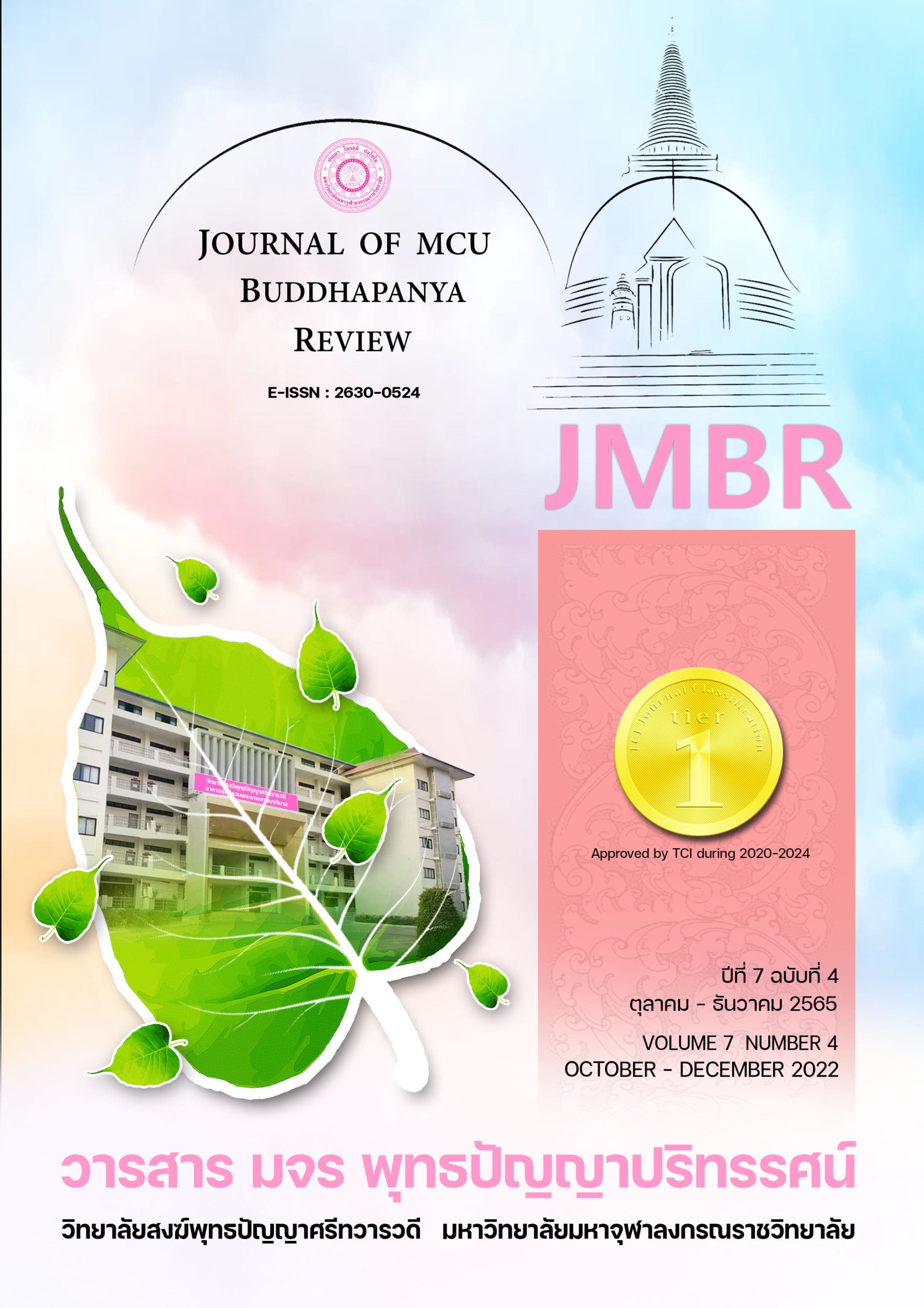The Management Process of Reverse Logistics and The Logistics Services Quality in Thailand's Electronics Export Industry
คำสำคัญ:
Quality of Logistics Services, Reverse Logistics Management, Electronics Export Industryบทคัดย่อ
Thailand's economic growth is primarily driven by exports. Electronic goods are a key export of Thailand, making it a base for economic mobility and domestic employment, but the supply management of the industry. Such production in operation has a problem with distribution management. It is not possible to reduce the costs incurred by logistics management and reduce the quality of logistics services. Therefore, this academic article focuses on studying reverse logistics management processes to increase the quality of logistics services in Thailand's electronics export industry.
Studies have shown that the reverse logistics management process consists of clear policymaking and return procedures, damaged production is reproduced to reduce costs, and an efficient waste disposal process will make the quality of logistics services available in the field of service information, demand response, on-time delivery, non-damaged transportation, and customer response to problems more efficiently.
เอกสารอ้างอิง
Abdullah, N., and S, Yaakub. (2014). Reverse Logistics: Pressure for Adoption and The Impact on Firm’s Performance. International Journal of Business and Society. 15(1), 151-170.
Abdulrahman, M.D., Gunasekaran, A. and Subramanian, N. (2014), “Critical barriers in implementing reverse logistics in the chinese manufacturing sectors”, International Journal of Production Economics,147, 460-471.
Aitken, J., & Harrison, A. (2012). Supply governance structures for reverse logistics systems. International Journal of Operations & Production Management. 33(6), 745-764.
Ausilio, R. D., & Anton, J. (2003). Customer Service and the Human Experience. Santa Maria: Benchmark Portal Press.
Badea, A., Prostean, G., Goncalves, G. and Allaoui, H. (2014), “Assessing risk factors in collaborative supply chain with the analytic hierarchy process (AHP)”, Procedia-Social and Behavioral Sciences,124, 114-123.
Bank of Thailand. (2021). Key Indicators of Thai Economic Conditions. Retrieved January 15, 2022, from http://www.bot.or.th
Bateman, T. and Snell, S. (2013). Management: Leading and Collaborating in A competitive World. New York: Mc Graw – Hill.
Chaiyot Chaimankong and Mayukphan Chaimankong. (2007). Logistics and supply chain strategy competing in the global market. Nonthaburi: Vision Prepress.
Chan, F.T. and Prakash, A. (2012), “Inventory management in a lateral collaborative manufacturing supply chain: a simulation study”, International Journal of Production Research, 50 (16), 4670-4685.
Chumpitaz, R. & Paparoidamis, N. G. (2004). Service quality and marketing performance in business to business markets: exploring the mediating role of client satisfaction. Managing Service Quality, 14(2-3), 235-48.
Federation of Thai Industries. (2021). Exporting electronic goods abroad. Retrieved 10 Aug 2021, from http://www.fti.or.th/2016/download/technical/Industrial _review_7-58_780.pdf.
Greve, C. & Davis, J. (2012). Recovering lost profits by improving reverse logistics. White paper,1(2), 1-17.
Ke, Xie & Zhao. (2014). The Evaluation and Selection of Supply Chain Models for Short-Life-Cycle Products. International Journal of Business and Management, 9(5). 12-25.
Kumar, G. and Nath Banerjee, R. (2014), “Supply chain collaboration index: an instrument to measure the depth of collaboration”, Benchmarking: An International Journal, 21(2). 184-204.
Li, L. (2012), “Effects of enterprise technology on supply chain collaboration: analysis of China-linked supply chain”, Enterprise Information Systems, 6 (1), 55-77.
Parasuranam, A., Zeithaml, V. A., & Berry, L. L. (1991). Refinement and reassessment of the SERVQUAL scale. Journal of retailing,67(4), 420-450.
Patale, P. and Zohair, M. (2021). Impact of Covid-19 Pandemic on Reverse Supply Chain of Electronic Commerce. The International journal of analytical and experimental modal analysis, 8(2), 53-59.
Rogers & Tibben-Lembke. (1998). Going Backwards: Reverse Logistics Trends and Practices. University of Nevada : Reno Center for Logistics Management Press.
ดาวน์โหลด
เผยแพร่แล้ว
รูปแบบการอ้างอิง
ฉบับ
ประเภทบทความ
สัญญาอนุญาต
ลิขสิทธิ์ (c) 2022 วารสาร มจร พุทธปัญญาปริทรรศน์

อนุญาตภายใต้เงื่อนไข Creative Commons Attribution-NonCommercial-NoDerivatives 4.0 International License.



